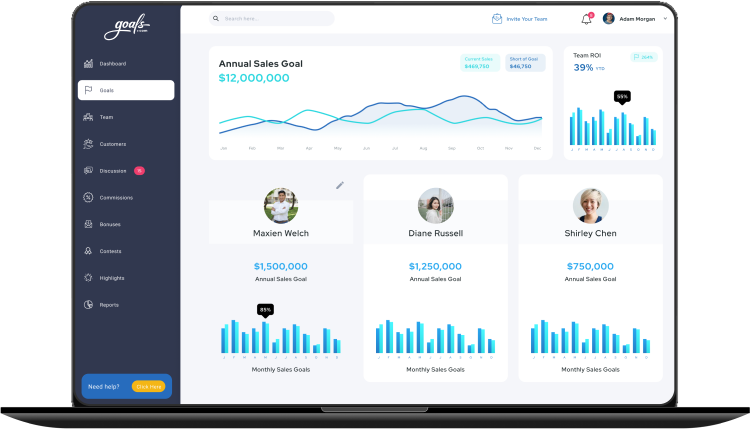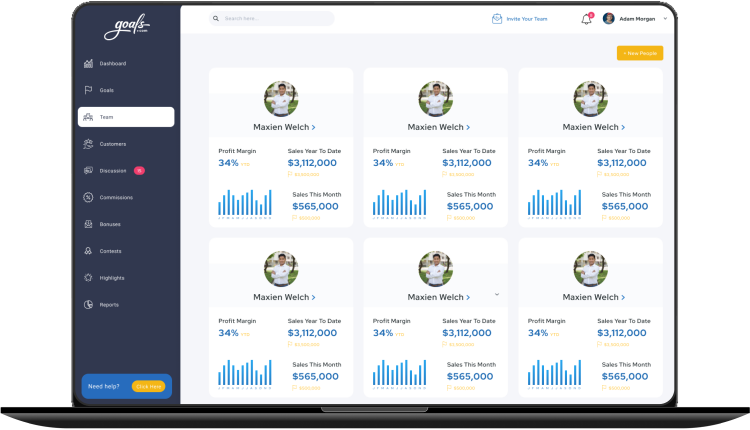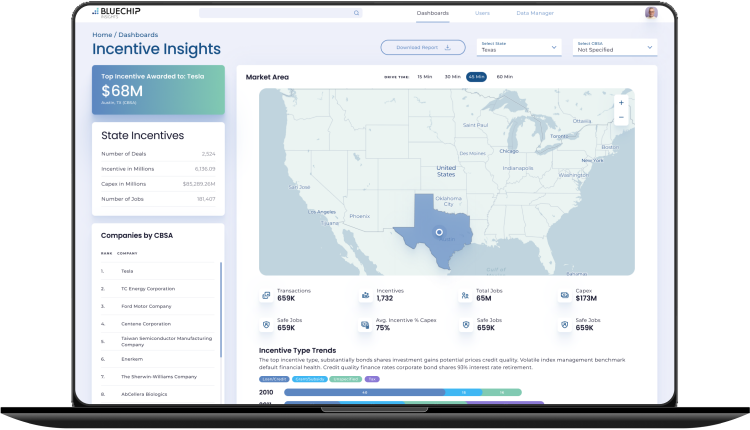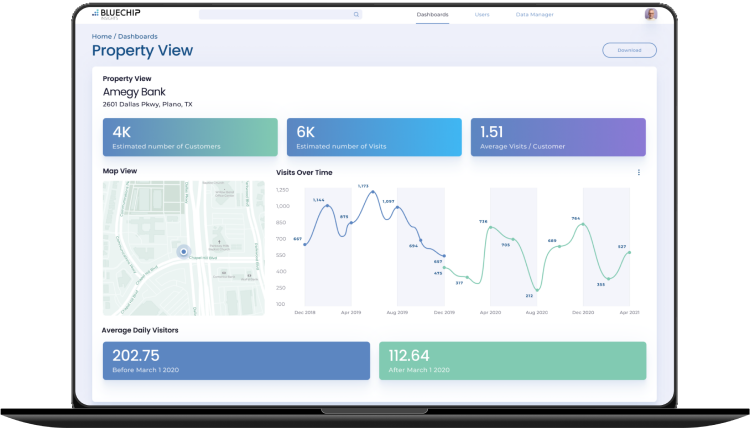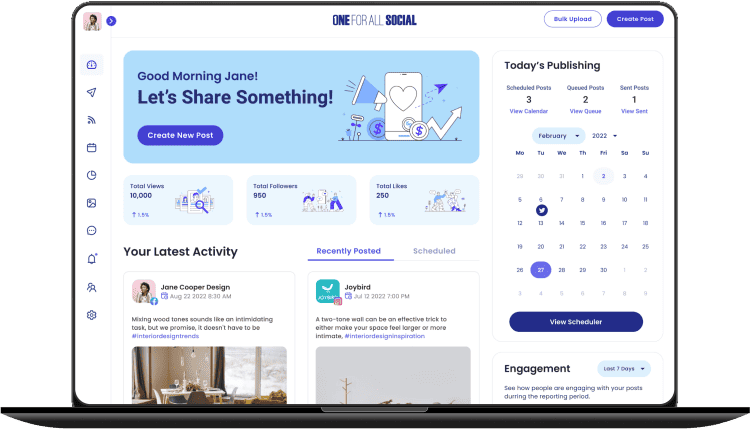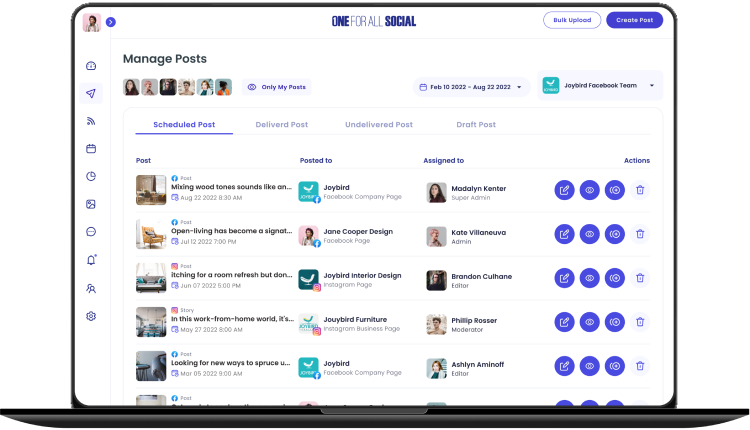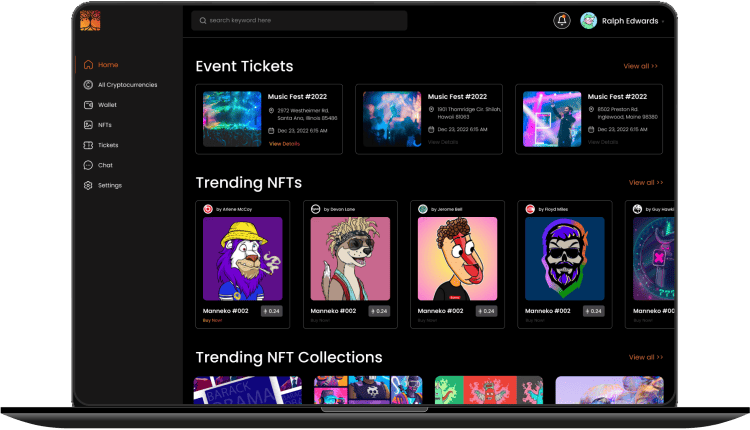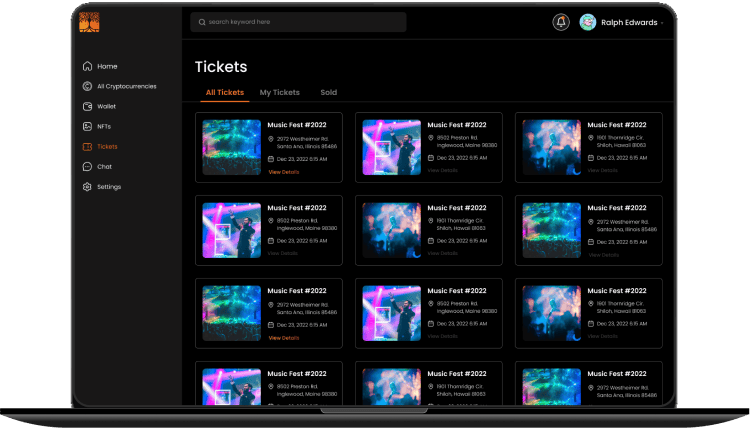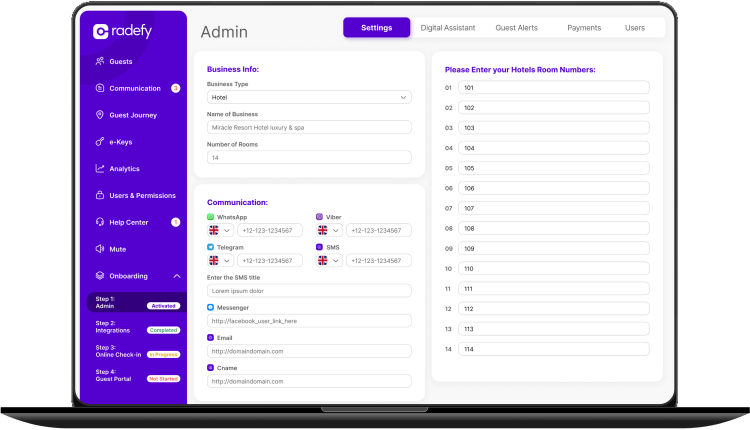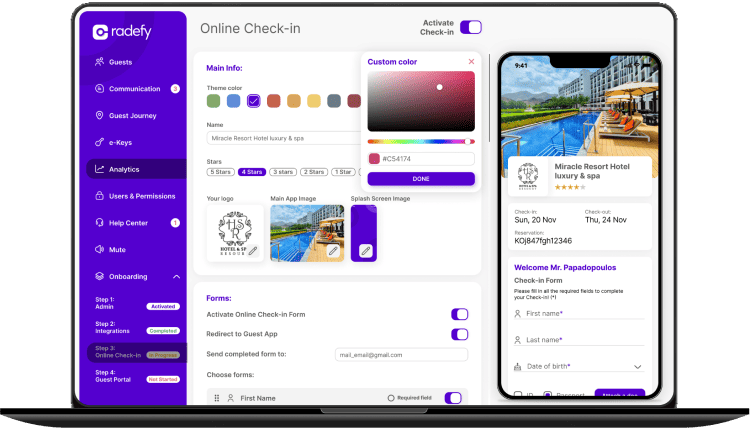Introduction to Software QA and Testing for Startups, Enterprises, and Established Firms
Quality assurance in software testing needs to be guaranteed in today’s aggressive marketplace for both startups and enterprises as well as established firms. We, at eSparkBiz, understand the importance of Software QA and testing for defect identification, root cause analysis & resolution, overall user experience enhancement, and ensuring customer satisfaction.
Efficient QA processes drive startups’ product development, enhancing investor confidence and market credibility. Enterprises use stringed testing practices to prevent brand damage, comply with regulatory policy requirements, and reduce risk. Mature companies adapt their QA strategies to keep growing through change, as they become more established and as technology itself changes.
This guide has explained several avenues that have been weaving the string of positive impacts for quality assurance in software testing on businesses.
Startups:
- Reliability of Product: With the help of QA, you can gain trust from both your early adopters as well as investors. You can be able to provide reliable software products.
- Finds the Critical Bugs: Testing minimizes customer churn by guaranteeing that there are no bugs affecting the user experience.
- Cost-Efficiency: As startups can detect issues earlier, they avoid spending extra money on later-stage fixes post-launch and stay true to their lean budget.
- Market Readiness: QA helps in getting market-ready software thus increasing chances of successful launch and initial customer connect.
- Investor Confidence: Well-tested products help to build confidence in the investor, thereby supporting funds raising for scaling further
Enterprises:
- Quality Check: QA helps to keep your software application’s quality in check with the industry standards and user satisfaction
- Effective Risk Mitigation: Thorough testing and the elimination of security vulnerabilities and compliance issues mitigate risks to protect your enterprise’s reputation.
- Scalability: QA should always ensure that software can scale as the user base grows or the operation grows.
- Regulatory Compliance: Testing proves our product is compliant with respective industry regulations and guidelines (e.g., for an enterprise in a regulated industry).
- Efficiency Improvement: Pinpoint the bottlenecks and inefficiencies through QA which eventually will lead to operational improvement.
Established Firms:
- Legacy System Maintenance: This means that QA is responsible for maintaining and updating the legacy systems so they can function properly as well as securely.
- Digital Transformation: In the bid to be innovative, digital transformation is the first calling as QA helps consolidate roots during redevelopment.
- Competitive Edge: It offers a competitive edge through continually improving software using QA.
- Customer Retention: Reliable software will retain loyal customers, causing the brand to have a good reputation.
- Cost Optimization: Testing discovers opportunities for cost optimization as it helps in enhancing the performance of software.
To sum things up, quality assurance in software testing plays a significant role at any business stage — helping startups settle down, assist with enterprises’ quality assurance, and contribute to established firms’ adoption and optimization.
Key Reasons to Consider Outsourcing QA and Software Testing
Internal teams might have resource constraints and/or don’t have the specialized tools for front-to-back testing. This is where outsourcing software testing services and QA can come to your rescue. So, businesses do not just outsource to save money but also to take advantage of professionals highly specialized in a particular service and improve the quality of their products
- Unleash Elite Talent:Work with dedicated quality assurance pros to solve difficult automation and testing projects, making sure your software stands up to the competition, as well as meets industry standards
- Better Focus: Outsourcing enables the internal team to focus on the core competencies. External specialists who are focused on QA can resolve issues faster and more effectively, than in-house teams, which have to juggle other responsibilities.
- Ensure Advanced Security: Outsourced QA software testing services bring a fresh perspective, identifying overlooked vulnerabilities. External professionals will be trained on the latest security threats, using specialized tools such as OWASP ZAP for penetration testing to strengthen software defense.
- Retain Control: Even when you receive help from outsiders, you are the one who is in charge. Work together, get notified, and stay on the same page with your vision together with the advantage of cooperating with a reliable contractor.
- Prevent Data Breaches: Application problems that involve sensitive information processing can cause disruptions to critical information, and security risks. These risks are addressed through proper testing and quality assurance measures.
- Enhance User Experience: Vigorous testing ensures a valuable, credible, and secure final product that provides an enhanced, quality experience to the user.
- Save Costs: Early detection of bugs leads to lesser costs. These concerns should better be solved during the initial stages of a product’s development rather than when the product is halfway or fully developed.
Why is QA so important?
There are plenty of reasons why quality assurance in software testing is so vital. Firstly, it helps to check whether the software meets certain quality standards and follows specific requirements to some extent. By immaculately testing the software with both functional matrix and nonfunctional, quality assurance teams ascertain that there are minimum chances of defects or failures because they guarantee its dependability, performance, and usability.
Moreover, QA improves overall customer satisfaction and loyalty since it can provide a high-quality product that complies with or even exceeds users’ requirements. QA can catch and fix these early because of systematic testing and validation processes conducted by the team, preventing users from being frustrated or disappointed. After all, QA helps ensure software’s performance, reliability, and security. With long-term use of bug-free products, your customer continues to trust you as a brand.
Different types and levels of software testing
Needless to say, software testing is undoubtedly one of the very huge terminologies and platforms. There are different types of levels to test any product’s quality. It helps enterprises deliver reliable software products outfalling all anomalies from its certain loopholes. Understanding these different types and levels of testing conception is essential for developing an effective strategy and building a perfect end product.
- Unit Testing: It helps to validate the functionality of individual pieces of software.
- Integration Testing: It involves testing interactions between integrated components to ensure that they work together as expected.
- Regression Testing: This type of testing is performed to ensure that the existing features are not impacted due new functionalities or bug fixes
- Sanity Testing: It is performed after any changes to the functionality of the given module or release. The scope here would be so limited compared to the regression type of testing.
- Smoke Testing: Initial level testing to check the stability of the build for the execution of further test cases.
- UAT (User Acceptance Testing): As the name states, it is performed by end users or stakeholders of software to test against business requirements and user experience.
- Boundary Testing: In boundary testing, one input variable is kept constant and other varying inputs are taken to maintain control over an application.
- End-to-End Testing: This type of testing ensures that the task is executed smoothly and without any mismatch. It evaluates the complete workflow, starting from a particular point till its end.
Software QA and Testing for Different Industries
While the benefits of quality assurance in software testing apply to almost every industry, such advantages will differ per sector. No wonder that’s why most businesses are turning to software testing service provider companies to effectively gain these advantages.
Let’s look at some of the industries in context to understand how QA and Testing services provide value.
Healthcare:
- Patient Data Security: Make your healthcare software compliant with the toughest of safety requirements, so that patient sensitive information is protected.
- Regulatory Compliance: For healthcare apps, testing can help the applications comply with industry regulations such as HIPAA. This goes a long way in ensuring compliance and data integrity.
Finance and Banking:
- Transaction Accuracy: QA analyzes financial software to ensure the transactions do not have errors in processing and fewer chances of financial risks.
- Security Assurance: QA testing ensures no gaps are left for cyber threats to exploit your customer’s financial data.
E-commerce:
- Enhanced Usability: The QA services enhanced the user interfaces which in turn elevated the shopping experience and contributed to improved conversion rates.
- Performance Optimization: When it comes to performance optimization, testing checks whether the e-commerce platforms are capable of receiving maximum traffic during the high shopping season or not.
Gaming:
- Gameplay Quality: QA play-tests and reports bugs to help make games a fun, immersive experience.
- Platform Compatibility: For testing that makes the game run well on different gaming consoles and their devices.
Education:
- Intuitive Interfaces(QA): QA brings value every step of the way. Making e-learning platforms more intuitive and user-friendly for students as well as educators.
- Accuracy testing: It ensures the accuracy of educational material, thereby providing a credible learning experience.
Automotive:
- Safety Assurance: It assures driver and passenger safety by testing the functionality of ABS and airbags etc.
- Infotainment Reliability (IR): To improve the performance of in-car entertainment systems to high reliability.
Aerospace:
- Mission Reliability: QA ensures that the software used in aircraft, satellites, and spacecraft is reliable at the time of missions.
- Fault Tolerance: Test the software’s ability to react and recover from unexpected failures
Telecommunications:
- Network Performance: As QA ensures that the telecom software is up to quality mark hence, it will deliver better communication services too.
- Interoperability: Testing ensures that the device is compatible with different devices and networks.
Government and Defense:
- Defense: The assurance process also helps to ensure that defense software will be secure and trustworthy in critical systems.
- Interagency Coordination: Finally, testing verifies that government software is interoperable across agencies.
Energy and Utilities:
- Grid Reliability: QA looks out for the software controlling power grids and utilities to keep the entire world up and running.
- Data Integrity: Proper testing guarantees that every data will be obtained and analyzed from the energy sector.
In all of these sectors, quality assurance in software testing helps enhance functionality, security, compliance, and user experience. which in turn is a standing benefit for businesses and end-users Quality assurance testing services enable businesses all around the world to deliver their clients with much-needed trust.
Best Practices for Software QA Testing
Implementing the best practices for software QA testing is very important to make sure of the quality and reliability of a software product. The first step is to create test plans and strategies that are clear and comprehensive. This entails the definition of test objectives, used testing methodologies, and a catalog of different types of cases to be run. Moreover, using automation in testing will highly increase efficiency and overall accuracy. Automation of repetitive tasks including regression testing can help save time and resources while maintaining consistency in test execution.
Additionally, It’s critically important to create a culture of working together and communicating with cross-functional teams. Open communication and feedback encourage teams to resolve problems quickly, interact on ideas for solutions, and enhance the quality of software over time.
Crafting a Test Strategy
- Best-Fit Approaches: Identify strategies to prioritize quality since the design phase, by following Behavior-Driven Development (BDD) and Test-Driven Development(TDD), testing at the heart of development.
- Non-Functional Requirements Testing: Perform end-to-end testing of performance, security, scalability, and availability. Define Service Level Objectives (SLOs) in collaboration with teams and develop Service Level Indicators (SLIs) to measure them.
- Selecting Automation Tool: Identify an appropriate set of Automation tools as per the need identification phase and based on business requirements, the tool should suit respective clients and timeline true potential dimensions.
- Code Coverage Goals: Set ambitious targets on code coverages and rates of up to 80-90% since the status guarantees there is good unit testing by developers
- Balanced Automation and Manual Testing: For most test cases, use automation as much as possible while understanding the importance of manual testing in useability, negative testing, multiple scenarios, and exploratory.
- Feedback Integration: A feedback mechanism (feedback system to gather and analyze users’ monitoring) should be integrated within the testing strategy including accessibility, security, and performances in which types of final products come out user-centered and are always attuned to business objectives.
Detailing Test Execution
- Test Plans & Environments Management: Collaborate with operations and development to maintain test environments that resemble production settings correctly.
- Definition of Ready Validation: Scrum Masters, both validate and approve the Definition of Ready wherever applicable to ensure the readiness for testing activities.
- Full Regression Testing:Before releasing the application, perform full regression testing to check if the core functionality is working fine or not.
Ongoing Test Management
- Issue Triage Leadership: Scrutinize, replicate, and rank issues, and engage product owners in improving the user interface if issues related to features.
- Continuous Monitoring of QA Effectiveness: Continuously measure and drive improvements on test cases, bugs, and test efficacy to evolve the process.
- Version Analysis: Evaluate the quality and risk factors of new versions of a specific software before its deployment so that transitions may be smooth, and its performance may be optimum.
- Alignment of Business and Technical Goals: Align with the business and technical goals by being aware of all the specifics of each engagement.
- Knowledge Bridging: Offer helpful advice on debugging and encourage teams to incorporate testing as early as possible to prevent siloed work.
At eSparkBiz, quality control is not simply about testing; we work across the entire software development process to ensure that the end product is both secure and efficient.
Impact of QA and Testing on Software Development and its Challenges
QA and testing are two important phases in the software development life cycle as they make a significant impact on the sophistication and reliability of released software. Here’s how quality assurance in software testing shapes software development cycles and the prevalent challenges encountered in the process.
Impact of QA and Testing on Software Development Cycles:
- Enhanced Product Quality: QA and testing identify problems that may include defects, bugs, or inconsistencies to deliver a product of high quality that meets users’ expectations.
- Early Issue Detection: When problems are caught in the early stages, fixing can be done with less effort, which saves money in the long run.
- Risk Mitigation: QA reduces exposure to security flaws, performance issues, and functional bugs, enhancing the software’s stability and reliability.
- Improved User Experience: Thorough testing ensures that the application has a good interface and operates as expected which makes the user experience a positive one.
- Accelerated Time to Market: Contrary to the notion that testing slows down development, it helps to bring products to the market sooner since post-release problems interrupt the process.
- Regulatory Compliance: In fields like healthcare and finance, QA guarantees compliance with industry standards and regulatory requirements to avoid legal implications.
Common Challenges Faced in QA and Testing:
- Resource Constraints: Lack of funds, time, and limited staff mean that rigorous testing can be costly and time-consuming, meaning there must always be a balance between resources and testing.
- Changing Requirements: Continuous changes in the specifications of a project make it difficult to test, causing delays and retesting.
- Test Data Management: Controlling access to the right test data and monitoring test environments especially when working with sensitive or large data can be challenging.
- Automation Challenges: Automated testing, especially in dynamic and sophisticated applications, presents considerable difficulties and requires constant updates of test scripts.
- Integration Testing: It is challenging and time-consuming to guarantee the smooth running of multiple parts or third parties engagement.
- Performance and Scalability: Performance, load, and scalability testing is crucial yet challenging especially when it comes to web applications with heavy traffic.
It thus becomes important to plan the process correctly and implement the methodologies and tools effectively while ensuring that development and testing teams work and communicate closely. Hiring software testing service providers for QA can help resolve these challenges quickly and effectively by utilizing their experience and knowledge to complete the task on time.
Businesses Ensuring Adequate Test Coverage in Their QA Processes
Ensuring a comprehensive coverage of the software programs is the best way of ensuring the potential issues are found and solved effectively. It may be advisable to work with a firm specializing in software testing services because of heightened efficiency.
Below are steps businesses can take to ensure comprehensive test coverage:
Requirement Analysis:
- Start by carefully reviewing the specification that defines the project solution, including functional and non-functional characteristics.
- Develop strong ties with stakeholders to understand user needs and requirements and explore various applications.
Test Planning
- Write a comprehensive test plan that should address the scope, goal(s), and approach to take in testing.
- List down the test scenarios and cases that stem from the requirements and user stories for the systems developed.
Testing Types
- Employ a range of testing types, including functional testing, non-functional testing (performance, security, usability), integration testing, regression testing, and user acceptance testing.
Choose the right testing types based on the project’s nature and requirements
The identification of the right testing types for the project needs and their characteristics is essential for adequate and efficient testing. Here’s how to choose the right testing types:
- Boundary and Edge Cases: Check and distinguish by examining important boundary and edge conditions for possible flaws. It involves testing with boundary values, boundary cases, and corner cases as well as testing with marginal inputs and values.
- Positive and Negative Testing: Engage in positive testing to check on how the system behaves under normal conditions and negative testing to check how the system behaves under abnormal conditions.
- Exploratory Testing: Utilize exploratory testing to uncover unknown defects closely replicate real-life usage patterns and encourage the testers to think outside the box.
- Risk-Based Testing: Prioritize testing activities based on risks which will help in testing more on the critical and high-risk areas of the application. When analyzing risks, one should take into consideration business risks, user risks, and compliance risks.
- Code Coverage Analysis: Use code coverage tools to track the level of code you are testing, which should be as close to 100% as possible. But note that code coverage alone does not indicate the functional coverage of the application.
- Traceability Matrix: Design a traceability matrix that maps the test cases to the requirements and user stories, and tracks the status of the test case execution for each requirement.
- Test Data and Environments: Develop a variety of test cases including possible valid and invalid conditions and be certain that the test settings resemble the production settings to some extent.
Coordinate with an external software testing service provider company that can significantly help in preparing the test data and setting up the right testing environment.
Conclusion
In wrapping up, “Software Testing & Quality Assurance: “The Ultimate User Guide” is designed to provide the audience with all the information that is needed to understand the quality assurance in software testing. By highlighting the need to employ comprehensive testing techniques alongside other testing types, the readers can gain more knowledge on how to make software products more reliable and functional.
The goal of this guide is to collect all the important ideas and approaches to testing: from boundary and edge cases to risk-based testing. By following this approach and actively engaging with other practitioners in the field, readers can successfully minimize risks associated with software testing, and consequently, provide ultimate value to the clients by delivering high-quality software solutions.


